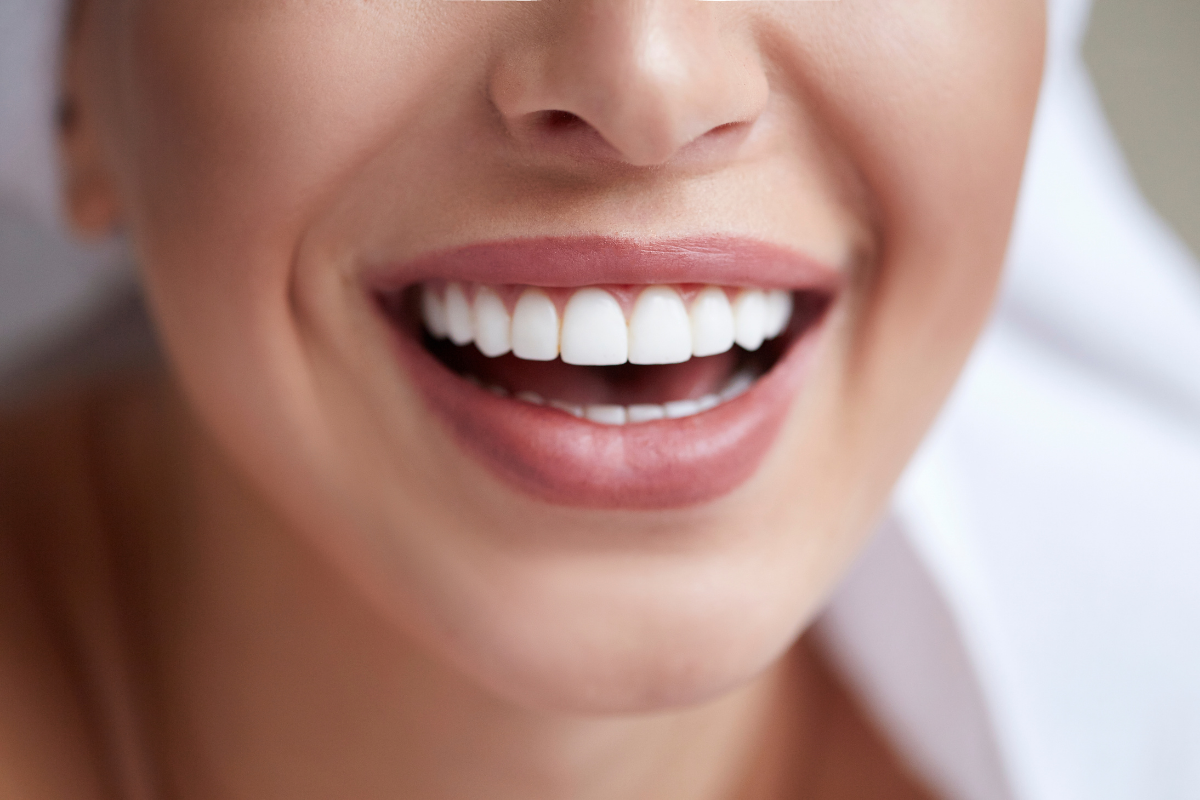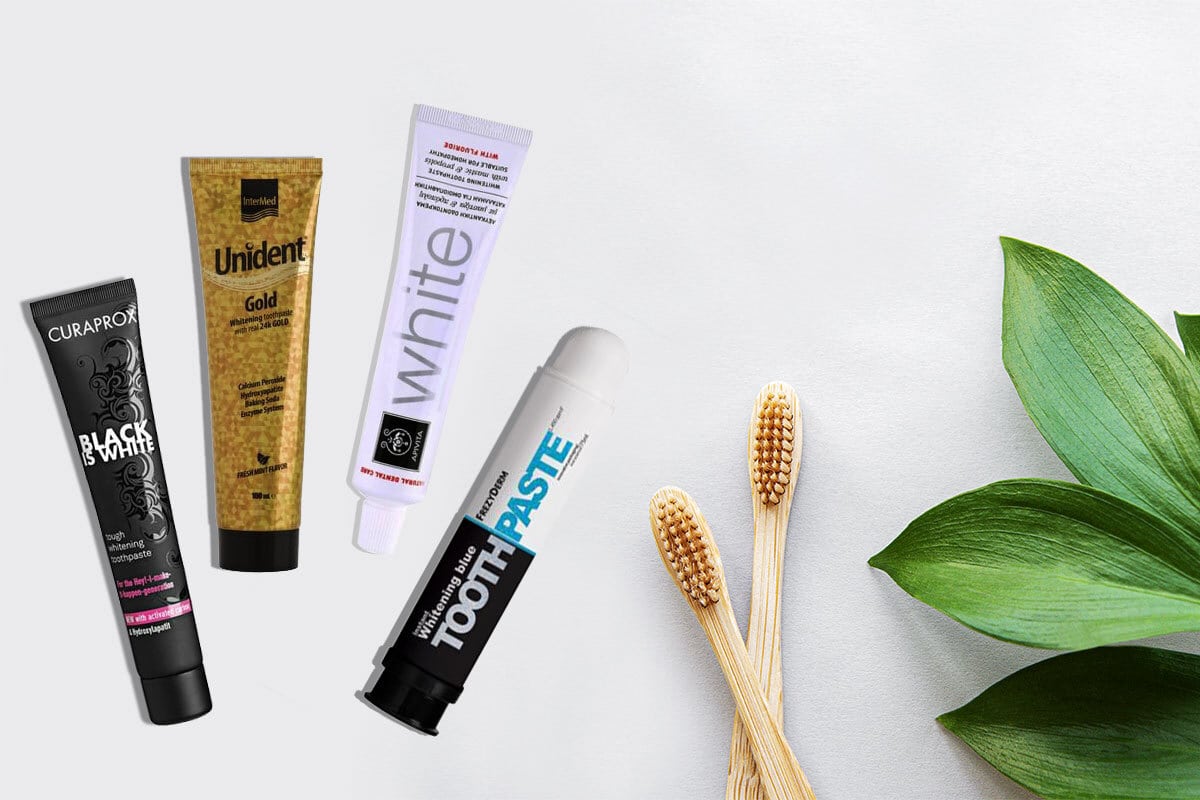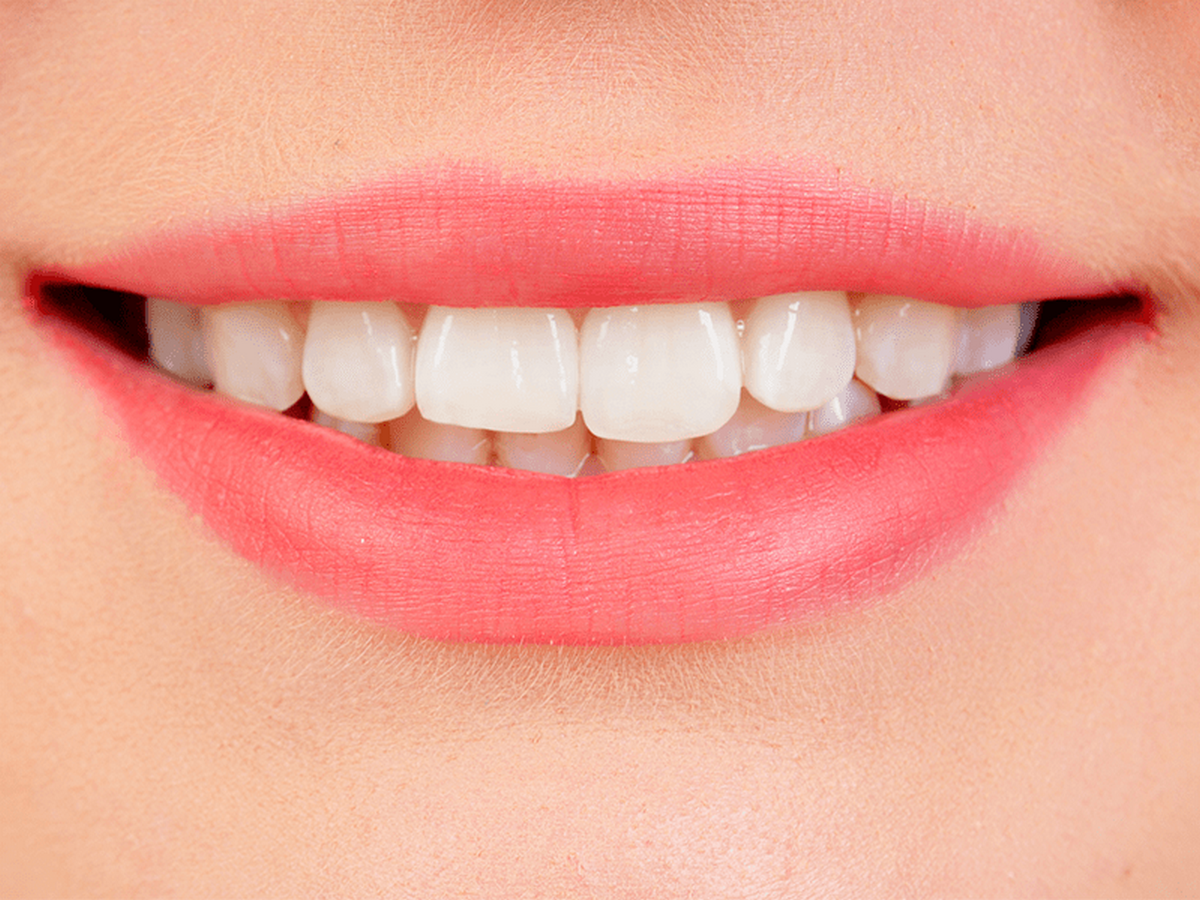Teeth whitening at home: 7 simple natural solutions

A bright and white smile is something that everyone wants. Although white teeth are beautiful, their white color can hardly be maintained over the years. But how can we whiten our teeth, protecting them from the wear and tear of time?
Why do our teeth turn yellow?
The natural color of the teeth varies from person to person. Dental discolorations, such as yellow teeth, can be due to a variety of factors.
Some foods contain substances that are capable of damaging the enamel, the enamel of the teeth. For example, tea, coffee, curry and bright red fruits can stain your enamel.
In addition, the accumulation of dental plaque on your teeth can make your teeth look more yellow. This type of discoloration can be treated very easily with regular brushing and dental check-ups.
However, sometimes the teeth look yellower because the hard enamel has eroded, revealing the dentin, the layer of tooth that lies beneath the enamel and is yellow.
Natural ways to whiten teeth
Here are 7 different ways to whiten your teeth naturally.
1. Proper cleaning
Proper cleaning is the alpha and omega for white and shiny teeth. Daily cleaning with good brushing and daily flossing is required to remove food debris and bacteria, which create plaque and thus the teeth look more yellow and dull.
Ideal is the use of an electric toothbrush which, thanks to its rotating movements, removes plaque more effectively even in the most inaccessible places.
2. Toothpastes for whitening
We suggest you:
- Frezyderm Oral Science Instant Whitening Blue Toothpaste 75 ml: Daily use toothpaste that immediately offers a whiter smile, without corroding tooth enamel. It combines a special blue pigment and silicon granules for a visibly whiter effect, while the content of 1,450 ppm of fluoride protects against caries.
- Apivita Dental Care White Toothpaste mastic & propolis 75 ml: Fluoride whitening toothpaste with natural composition for effective oral hygiene. Contains mastic oil and lemon that prevent the formation of dental plaque, while bicarbonate of soda restores white color to teeth. Suitable for homeopathy.
- Intermed Unident Gold Whitening Toothpaste mint flavor 100 ml: Specially designed for daily use, contains safe whitening agents, which restore and maintain the white color of the teeth. Enriched with nuggets of gold and a unique combination of hydroxyapatite, calcium and fluoride crystals to enhance enamel.
- Curaprox Black is White Toothpaste 90 ml: Toothpaste for teeth whitening with activated carbon, which gives a bright smile. The enzymes it contains promote oral health, while hydroxyapatite strengthens tooth enamel. Enriched with blue filter that offers a pleasant refreshing sensation when brushing, with lemon flavor.
3. Bleaching and cleaning at the dentist
Despite the care we provide to our teeth, cleaning and whitening should be done by a specialist dentist, 1-2 times a year and depending on the needs of each denture. The result lasts longer, compared to the products we use in our home.
4. Eat fruits and vegetables
A diet rich in fruits and vegetables can be good for both your body and your teeth.
Although they are not a substitute for brushing, crunchy, raw fruits and vegetables act as a natural toothbrush, as they help remove plaque.
Strawberries and pineapple are two fruits that have been claimed to help whiten your teeth.
Strawberries
Bleaching your teeth with a mixture of strawberry and baking soda is a natural treatment that is very popular.
While strawberries can act as “exfoliation” for the teeth and make them look whiter because they help remove surface debris. More intense stains are unlikely to be removed,
A recent study found that a mixture of strawberry and baking soda caused very little discoloration in the teeth, compared to commercial whitening products. Although it has been shown to have minimal effect on tooth enamel, overuse could cause damage. [3] Therefore, it is best to do it a few times a week.
Pineapple
Some people claim that pineapple can whiten teeth. One study found that a toothpaste containing bromelain, an enzyme found in pineapple, was significantly more effective at removing stains from teeth than a standard toothpaste. [4]
However, there is no evidence that eating pineapple produces the same effect.
5. Try the oil pulling
Oil pulling is a traditional Indian recipe that is intended to improve oral hygiene and remove toxins from the body.
Usually this recipe includes coconut oil, but you can choose any other oil of your choice. Coconut oil is a popular choice because it has a pleasant taste and offers many health benefits.
Coconut oil is high in lauric acid, which is known for its ability to reduce inflammation and provide antibacterial activity. [1] Some studies have shown that daily oil pulling reduces bacteria in the mouth, along with plaque and gingivitis. [1,2]
However, no scientific study has shown that this practice whitens your teeth. But it is a safe practice and it is worth trying. Many people claim that their teeth are whiter and brighter after regular application.
How is it done? Hold 1 tablespoon of coconut oil in your mouth, ideally for 15-20 minutes, without swallowing it. Then you can proceed with brushing your teeth.
Unlike many other teeth whitening methods, oil pulling with coconut oil does not expose your teeth to acid or other ingredients that corrode the enamel. This means that it is safe for everyday use.
6. Homemade whitening recipes
Baking soda (sodium bicarbonate) and hydrogen peroxide are common teeth whitening techniques, based on changing the acidity of the mouth and removing pathogenic microorganisms that cause tooth decay.
However, it is worth noting that most whitening products contain them, so you do not need to make a solution yourself. It would be better to choose a whitening kit that gives the right ratio of ingredients to achieve the whitening you want without damaging the enamel. of teeth and / or gum irritation.
Do not forget that whitening products do not whiten the color of the teeth, they just effectively remove tooth stains, bacteria and plaque that dull your teeth and thus offer a brighter result.
7. Prevent tooth stains
While your teeth turn yellow by nature as you grow older, there are some things you can do to help prevent stains on your teeth.
Limit foods that stain teeth
Coffee, red wine, soda and dark berries can cause stains. This does not mean that you should avoid them completely, but you should limit their time to protect your tooth enamel.
For example, in beverages such as coffee, you can try to drink them with a straw so that they do not come in direct contact with the teeth. In addition, brush your teeth about 30 minutes after eating one of these foods or beverages to reduce their effects on your tooth color.
Limit your sugar intake
If you want whiter teeth, reduce your sugar intake. A diet high in sugar supports the growth of Streptococcus mutans, the main type of bacteria that causes plaque and gingivitis. [5] When consuming a sugary food, be sure to brush your teeth immediately afterwards.
Add plenty of calcium to your diet
Some discoloration of the teeth is caused by the erosion of the enamel and the exposure of the dentin from below, which is yellow. Therefore, anything you do to strengthen your tooth enamel will help keep your teeth white.
Foods rich in calcium, such as milk, cheese and broccoli, can help protect your teeth from corrosion of the enamel. [6]
Extra tips
There are some other natural methods of teeth whitening, but no scientific evidence has been found to prove that they are 100% safe or effective.
Some of the natural alternatives:
- Activated carbon: Activated carbon brushing promises to pull toxins
from the mouth and removes stains from the teeth. - Kaolin: The purest form of clay is kaolin. Proponents of this method claim that brushing with clay helps to remove stains from the teeth.
- Fruit peels: Rubbing orange, lemon or banana peels on your teeth is claimed to make them whiter.
- Apple cider vinegar: Offers antimicrobial action and contributes to the natural whitening of teeth. Excessive use of this method can lead to corrosion of the enamel, so it is recommended to brush with apple cider vinegar 1-2 times a week.
It is important to remember that most natural remedies work by gently removing surface stains on your teeth.
Excessive use of any whitening product can damage your teeth. Always consult your dentist to choose the method that will work best for you.
At Vita4you you can find a wide variety of products for effective teeth whitening.
References
- Effect of coconut oil in plaque related gingivitis — A preliminary report
- Effect of oil pulling on plaque induced gingivitis: a randomized, controlled, triple-blind study
- Efficacy of do-it-yourself whitening as compared to conventional tooth whitening modalities: an in vitro study
- Efficacy of Extrinsic Stain Removal by Novel Dentifrice Containing Papain and Bromelain Extracts
- Role of Sucrose in Colonization of Streptococcus mutans in Conventional Sprague-Dawley Rats
- Effect of Acidic Challenge Preceded by Food Consumption on Enamel Erosion
- 6 Simple Ways to Naturally Whiten Your Teeth at Home
Disclaimer
The content of this blogspot is not and can not be considered as medical advice, diagnosis or treatment. All information is provided to readers solely for informational purposes. There is no intention to substitute this content for personalized medical advice, diagnosis, prognosis or treatment.







Leave a comment